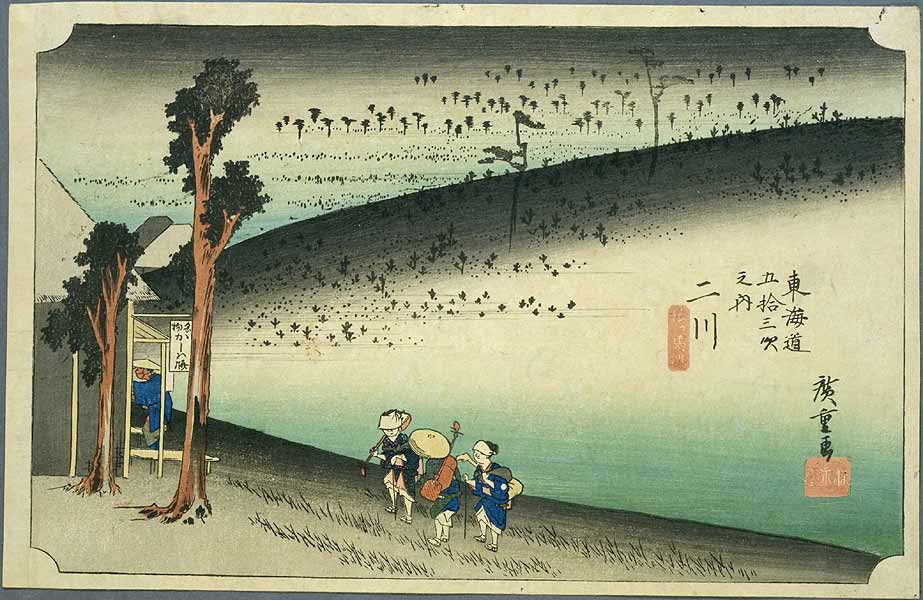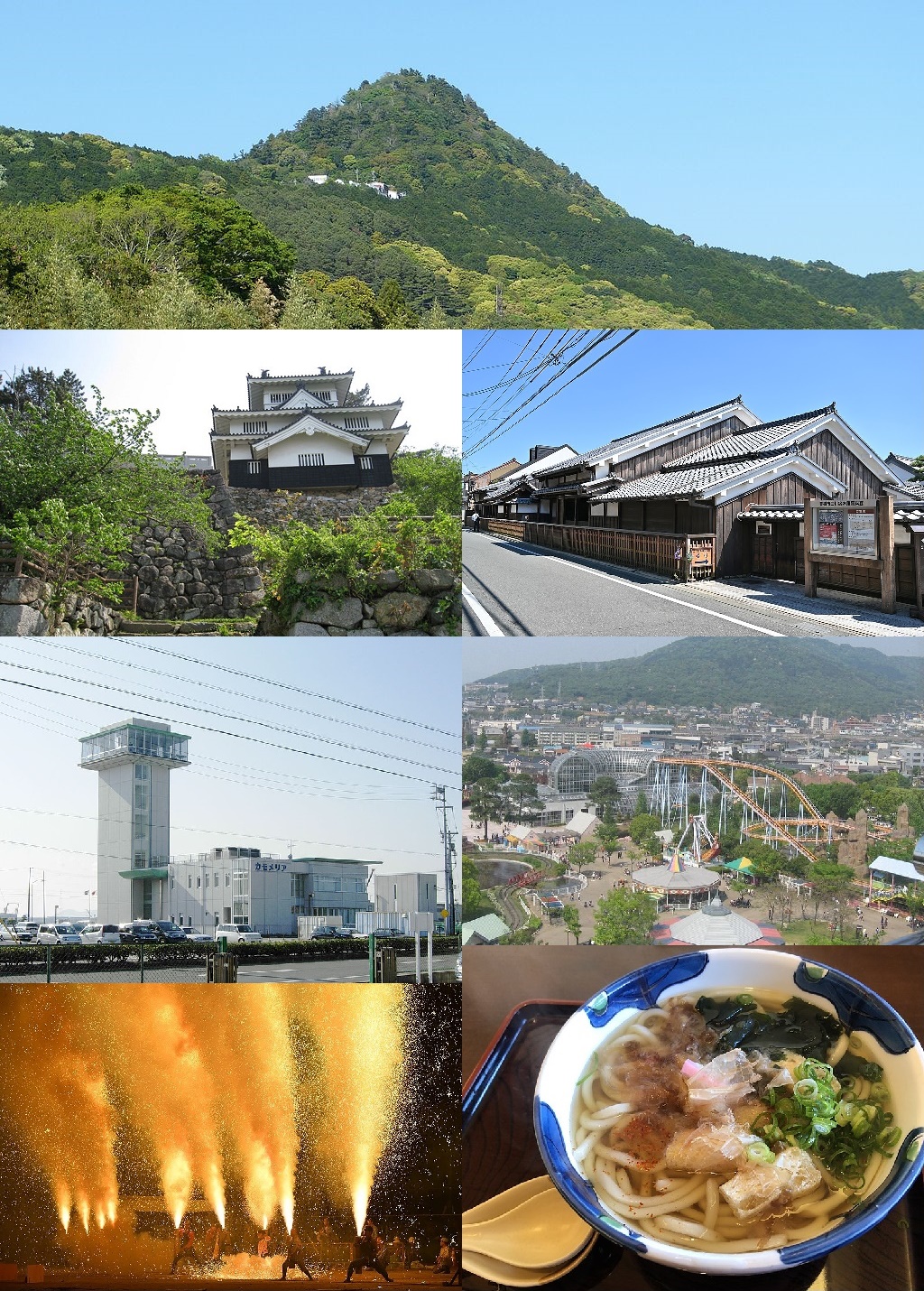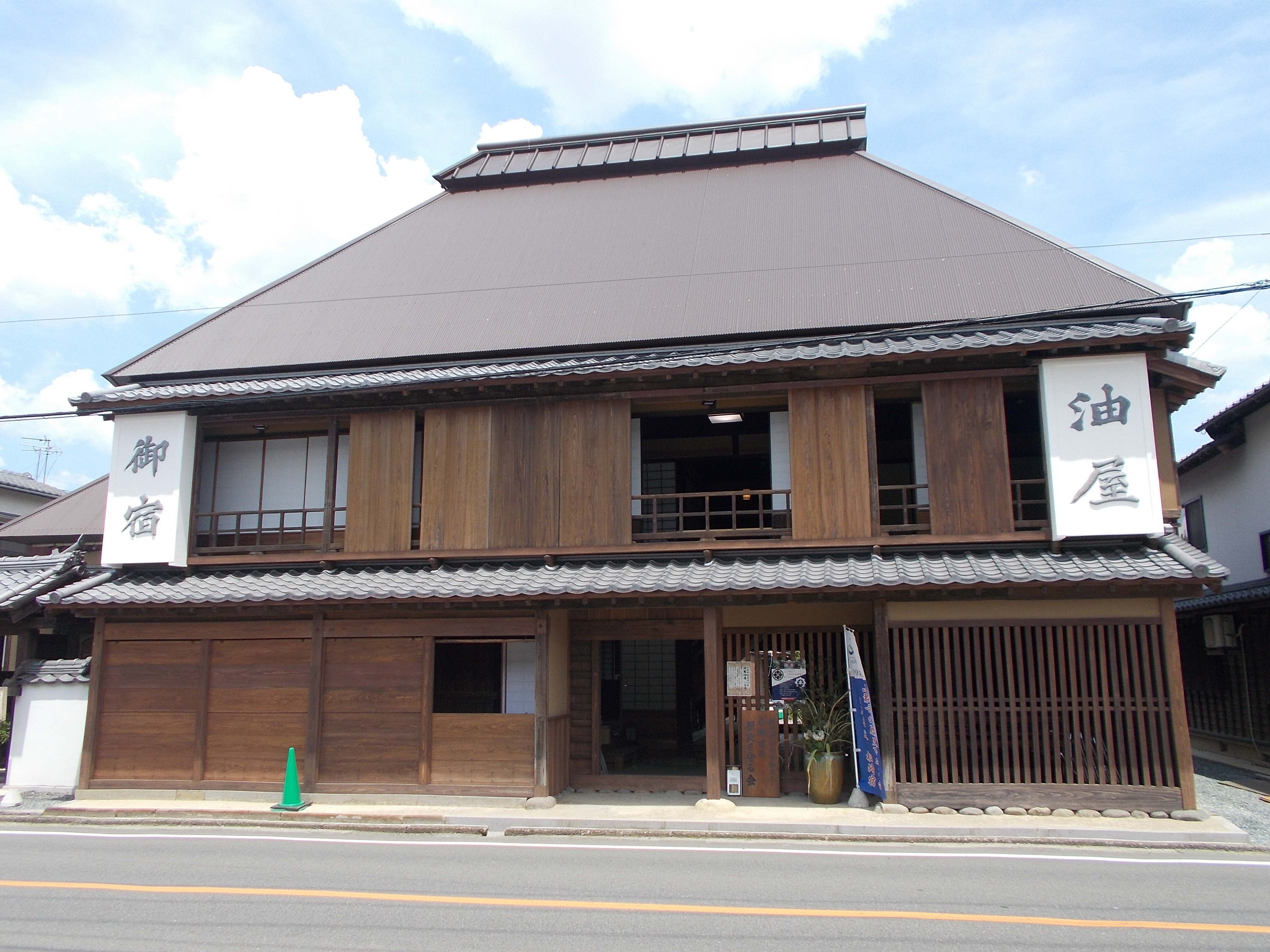|
Futagawa-juku
was the thirty-third of the fifty-three stations of the Tōkaidō. It is located in what is now the city of Toyohashi, Aichi Prefecture, Japan. It was the easternmost post station in Mikawa Province. History Futagawa-juku was established in 1601 when two villages, Futagawa (二川村 ''Futagawa-mura'') and Ōiwa (大岩村 ''Ōiwa-mura''), in Mikawa Province's Atsumi District were directed with caring for travelers. However, as the towns were rather small and were separated by 1.3 km, the original setup did not last long. In 1644, the Tokugawa shogunate moved the village of Futagawa further to the west and the village of Ōiwa further to the east, before reestablishing the post station in the Futagawa's new location. An '' ai no shuku'' was built in Ōiwa. Futagawa-juku was located approximately from Edo's Nihonbashi, the start of the Tōkaidō. Furthermore, it was from Shirasuka-juku to the east and from Yoshida-juku to the west. Futagawa-juku itself stretched for ... [...More Info...] [...Related Items...] OR: [Wikipedia] [Google] [Baidu] |
Yoshida-juku
was the thirty-fourth of the fifty-three stations of the Tōkaidō. It is located in the center of what is now the city of Toyohashi, Aichi Prefecture, Japan. It was from the start of the route in Edo's Nihonbashi and from Futagawa-juku to the east and from Goyu-shuku to the west. History Yoshida-juku was established in 1601 as a post station within the castle townYoshida-juku to Goyu-shuku Tōkaidō Hitoritabi. Accessed December 11, 2007. surrounding , an important and |
Toyohashi, Aichi
is a city in Aichi Prefecture, Japan. , the city had an estimated population of 377,453 in 160,516 households and a population density of 1,400 persons per km2. The total area of the city was . By area, Toyohashi was Aichi Prefecture's second-largest city until March 31, 2005 when it was surpassed by the city of Toyota, which had merged with six peripheral municipalities. Geography Toyohashi is located in southeastern Aichi Prefecture, and is the capital of the informal "Higashi-Mikawa Region" of the prefecture. It is bordered by Shizuoka Prefecture to the east, and by Mikawa Bay and the headlands of the Atsumi Peninsula to the west. To the south is the Enshu Bay of the Pacific Ocean. The presence of the warm Kuroshio Current offshore gives the city a temperate climate. The in Toyohashi is a sea turtle nesting spot. Climate The city has a climate characterized by hot and humid summers, and relatively mild winters (Köppen climate classification ''Cfa''). The average annual tempe ... [...More Info...] [...Related Items...] OR: [Wikipedia] [Google] [Baidu] |
Futagawa Station
is a railway station in the city of Toyohashi, Aichi Prefecture, Japan, operated by Central Japan Railway Company (JR Tōkai). Lines Futagawa Station is served by the Tōkaidō Main Line, and is located 286.7 kilometers from the southern terminus of the line at Tokyo Station. Station layout The station has a two island platforms connected to the station building by a footbridge; however, track 1 is not in use. The station building has automated ticket machines, TOICA automated turnstiles and is staffed. Platforms Adjacent stations , - !colspan=5, Central Japan Railway Company Station history Futagawa Station was opened on April 7, 1896 on the Japanese Government Railway (JGR) Tōkaidō Line. The JGR became the JNR after World War II. Freight service was discontinued in 1971 and small parcel service from 1979. Along with the division and privatization of JNR on April 1, 1987, the station came under the control and operation of the Central Japan Railway Company. A ... [...More Info...] [...Related Items...] OR: [Wikipedia] [Google] [Baidu] |
Futagawa Syuku Honjin Museum
Futagawa (written: 二川 lit. "two rivers") is a Japanese surname. Notable people with the surname include: *, Japanese film director and writer *, Japanese footballer See also *, a station of the Tōkaidō in Toyohashi, Aichi Prefecture, Japan *, a railway station in Toyohashi, Aichi Prefecture, Japan {{surname, Futagawa Japanese-language surnames ... [...More Info...] [...Related Items...] OR: [Wikipedia] [Google] [Baidu] |
Hatago
were Edo period lodgings for travelers at '' shukuba'' (post stations) along the national highways, including the Edo Five Routes The , sometimes translated as "Five Highways", were the five centrally administered routes, or ''kaidō'', that connected the ''de facto'' capital of Japan at Edo (now Tokyo) with the outer provinces during the Edo period (1603–1868). The most ... and the subroutes. In addition to a place to rest, ''hatago'' also offered meals and other foods to the travelers. They were also called . Name origin ''Hatago'' means "traveling basket." The word itself originally derived from baskets that contained food for horses and were carried by travelers. From there, it became a tool with which travelers were carry their own food and goods. Shops that began preparing and selling food for travelers gained the suffix , meaning "shop," but this was eventually shortened to just ''hatago''. Preserved ''hatago'' Because many post stations along the Tōkaidō, Nakas ... [...More Info...] [...Related Items...] OR: [Wikipedia] [Google] [Baidu] |
Honjin
The ''honjin'' at Inaba Kaidō's Ōhara-shuku.">Ōhara-shuku.html" ;"title="Inaba Kaidō's Ōhara-shuku">Inaba Kaidō's Ōhara-shuku. is the Japanese word for an inn for government officials, generally located in post stations (''shukuba'') during the later part of the Edo period. Evolution of ''Honjin'' Originally, ''honjin'' were places from which generals directed battles and, therefore, were fleeting in nature. However, as commanders began to transform the ''honjin'' into temporary lodgings during battle and travel, ''honjin'' came to be places where ''daimyō'' and other representatives of the shogunate, including ''hatamoto'', ''monzeki'', etc., were allowed to stay during their travels. Many of the ''honjin'' were actually personal residences of village and town leaders. As such, they received official designations from the government and expanded their residences to include walls, gates and other features. Because of their cooperation, the owners of the ''honjin'' also ... [...More Info...] [...Related Items...] OR: [Wikipedia] [Google] [Baidu] |
53 Stations Of The Tōkaidō
The are the rest areas along the Tōkaidō, which was a coastal route that ran from Nihonbashi in Edo (modern-day Tokyo) to Sanjō Ōhashi in Kyoto.. There were originally 53 government post stations along the Tōkaidō, where travelers had to present traveling permits at each station if wanting to cross. In 1619, the Ōsaka Kaidō (大阪街道) was developed to extend the Tōkaidō so that it would reach Kōraibashi in modern-day Osaka. Instead of going to Sanjō Ōhashi, travelers would leave from Ōtsu-juku and travel towards Fushimi-juku. Because of the addition of these four post towns, the Tōkaidō is occasionally referred to as having 57 stations. Another name for this extension was Kyōkaidō (京街道). The inland Nakasendō also started at Nihonbashi, and converged with the Tōkaidō at Kusatsu-juku. Shio no Michi intersected with the Tōkaidō at Okazaki-shuku. Stations of the Tōkaidō See also * Edo Five Routes ** 69 Stations of the Nakase ... [...More Info...] [...Related Items...] OR: [Wikipedia] [Google] [Baidu] |
Shirasuka-juku
was the thirty-second of the fifty-three stations of the Tōkaidō. It is located in Kosai, Shizuoka Prefecture, Japan. During the Edo period, it was the westernmost post station of Tōtōmi Province. History Originally, Shirasuka-juku was located very close to the shore of the ocean. However, in the earthquake of 1707, the earthquake and its tsunami devastated the region. After that, the post station was moved to its present location on a plateau. Before the 1707 earthquake, it was recorded to have 27 inns for travelers, making it a middle-sized post station. When the post station was decommissioned in 1889, it was replaced with the new town of Shirasuka, which later merged with the city of Kosai in 1955. During the Meiji period, the Tōkaidō Main Line was established. However, the train line did not come through Kosai and major developments in the area were kept to a minimum. As a result, there are still a few areas with buildings from the Edo period in existence today. ... [...More Info...] [...Related Items...] OR: [Wikipedia] [Google] [Baidu] |
Edo Period
The or is the period between 1603 and 1867 in the history of Japan, when Japan was under the rule of the Tokugawa shogunate and the country's 300 regional '' daimyo''. Emerging from the chaos of the Sengoku period, the Edo period was characterized by economic growth, strict social order, isolationist foreign policies, a stable population, perpetual peace, and popular enjoyment of arts and culture. The period derives its name from Edo (now Tokyo), where on March 24, 1603, the shogunate was officially established by Tokugawa Ieyasu. The period came to an end with the Meiji Restoration and the Boshin War, which restored imperial rule to Japan. Consolidation of the shogunate The Edo period or Tokugawa period is the period between 1603 and 1867 in the history of Japan, when Japan was under the rule of the Tokugawa shogunate and the country's regional '' daimyo''. A revolution took place from the time of the Kamakura shogunate, which existed with the Tennō's court, to the Tok ... [...More Info...] [...Related Items...] OR: [Wikipedia] [Google] [Baidu] |
Meiji Restoration
The , referred to at the time as the , and also known as the Meiji Renovation, Revolution, Regeneration, Reform, or Renewal, was a political event that restored practical imperial rule to Japan in 1868 under Emperor Meiji. Although there were ruling emperors before the Meiji Restoration, the events restored practical abilities and consolidated the political system under the Emperor of Japan. The goals of the restored government were expressed by the new emperor in the Charter Oath. The Restoration led to enormous changes in Japan's political and social structure and spanned both the late Edo period (often called the Bakumatsu) and the beginning of the Meiji era, during which time Japan rapidly Industrialisation, industrialized and adopted Western culture, Western ideas and production methods. Foreign influence The Japanese knew they were behind the Western powers when US Commodore (United States), Commodore Matthew C. Perry came to Japan in 1853 in Black Ships, large warshi ... [...More Info...] [...Related Items...] OR: [Wikipedia] [Google] [Baidu] |
Andō Hiroshige
Utagawa Hiroshige (, also ; ja, 歌川 広重 ), born Andō Tokutarō (; 1797 – 12 October 1858), was a Japanese ''ukiyo-e'' artist, considered the last great master of that tradition. Hiroshige is best known for his horizontal-format landscape series ''The Fifty-three Stations of the Tōkaidō'' and for his vertical-format landscape series ''One Hundred Famous Views of Edo''. The subjects of his work were atypical of the ''ukiyo-e'' genre, whose typical focus was on beautiful women, popular actors, and other scenes of the urban pleasure districts of Japan's Edo period (1603–1868). The popular series '' Thirty-six Views of Mount Fuji'' by Hokusai was a strong influence on Hiroshige's choice of subject, though Hiroshige's approach was more poetic and ambient than Hokusai's bolder, more formal prints. Subtle use of color was essential in Hiroshige's prints, often printed with multiple impressions in the same area and with extensive use of '' bokashi'' (color gradation), ... [...More Info...] [...Related Items...] OR: [Wikipedia] [Google] [Baidu] |








_Awa_Naruto_no_fuukei.jpg)